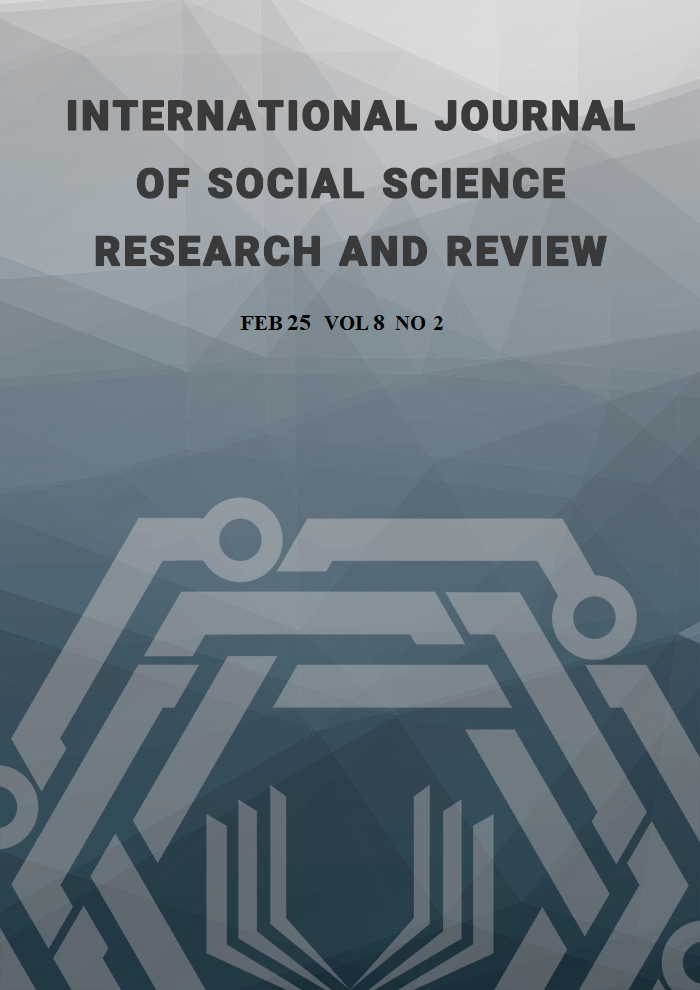Knowledge, Attitude and Practice of Traditional and Religious Leaders Towards Girl Child Marriage in Sokoto State, Nigeria
Abstract
Early marriage, a marriage conducted before the age of 18, is now widely recognized to be deeply rooted in socio-cultural, economic and religious fabrics of society in which it prevails. This paper examines the knowledge, attitude and practice of the traditional and religious leaders towards girl child marriage in Sokoto State, Nigeria. The study relied heavily on the open-ended tradition of participatory and qualitative research tools, using specifically in-depth interviews (IDI). Interviews were conducted with a total of 48 respondents made up of 18 religious leaders and 30 traditional leaders. The study finds that there appears to be a marked difference between the attitude of rural and urban religious and traditional leaders towards early marriage. The urban religious leaders appear to have a more favorable attitude towards girl-child education which translates into delayed marriage until age 18. Enrolment and retention of girl child in formal school is the most neutral and non-controversial route to rising age at marriage.
References
African Population Conference (2007): The Causes and Consequences of Early Marriage in the Amhara Region of Ethiopia. Sourced from uaps2007.princeton/.edu/papers/70517.
Bach, C. A. (1957): Survey of African Marriage and Family Life. London. Oxford University Press.
Bhattacharya, G. (2004):Socio-cultural and Behavioral Context in Heterosexual Married Couples in India: Challenges to HIV Prevention Programmes; In Health Education and Behaviour, Vol. 31, No. 1, pp 101-117.
Barret, S. R. (1984) The Rebirth of Anthropological Theory, Toronto, University of Toronto Presss.
Colson, E. (1967) The Intensive Study of Small Sample Communities in E. L. Epstein (ed.) The Craft of Social Anthrap.
Forward.Com (2013): Child Marriage. Retrieved from www.formarduk./keyissues/child- marriage.
Hammersley, M.. (1989) The Dilemma of Qualitative Method, Routledge.
Iyabode, O. (2010): Child Bride and Child Sex: Combating Child Marriages in Nigeria. Sourced from www.ajol.info/index.php/naujilj/article/download/82389/72544
Jenson, R. and Thornton, R. (2003): Early Female Marriage in the Developing World; In Gender and Development, Vol. II, No. 2, pp 9-19.
Obikeze, D. S. (1990) Methods of Duta Analysis in the Social and Behavioural Sciences, Enugu: Auto-Century Publishing Co. Ltd.
Shehu, D. J. (1992) “Socio-Cultural Factors in the Causation of Maternal Mortality and Morbidity in Sokoto,”in M. N. Kesseka (ed.) ‘Women’s Health Issues in Nigeria, Tamaza Publishing Co. Ltd.
Shehu, D. J. (1999) “Upgrading Community Awareness of Obstetric Complications in North Western Nigeria” in Journal of Reproductive Health Matters, August-Dec.
Khalid, S. and Zango, I. M. (1995) “Access to Reproductive health Services in Nigeria: A Study of Vesico-Vaginal Fistulae (VVF) in Kano”, paper presented at the National Conference on Population and Development in Africa: Plan of Action, organized by Population Association of Nigeria, Benin City, 4th-5th May.
Khalid, S. and Zango, I. M. (1996) “The Reasons for the Incidence of Vesico Vaginal Fistulae (VVF) in Kano”, Journal of Social and Management Studies, Vol. 3.
Ma’aji, N, I. (Undated): Between Early Marriage and Adolescent Girls in Northern Nigeria. Retrieved from: www.gamji.com/article600/NEWS7738.htm.
Malhotra, A. (2010): The Causes, Consequences and Solutions to Forced Child Marriage in the Developing World: Testimony Submitted to the US House of Representatives Human Rights Commission, Washington DC. International Centre for Research on Women. Sourced from: www.icrw.org/files/images/-7-15-2010/pdf.
Nwokolo, C. (2010): Counseling Against Early Marriage of the Girl Child in Anambra State; In Edo Journal of Counseling. Vol. 3, No. 1, pp 56.
N. P. C. (2006) National Population Commission Census News Vol. 3.1.
Otoo-Oryortey, N. and Pobi, S. (2003): Early Marriage and Poverty: Exploring Links and Key Policy Issues; In Gender and Development. Vol. II, No. 2, pp 42-51.
Pathfinder International (2006): Report on Causes and Consequences of Early Marriage in Amhara Region, Addis Ababa, Ethiopia. Sourced from www.pathfinder.org/publications- tools/pdfs/pdf.
Population Council (2012): Child Marriage: Overview. Retrieved from http//www.popcouncil.org/topics/youth_child_marriage.asp.
Ruba, H. (undated) Benefits of early marriage and its Islamic view. Retrieved from: http://hakeem-ruba.com/benefits-of-early-marriage.html. Sourced on 12/07/2013.
Sharpe, S. (1976): Just Like a Girl: Girls learn to be Women. Penguin Books. Harmondsworths.
UNFPA (2004): Child Marriage Advocacy Programme: Fact Sheet on Child Marriage and Early Union. Sourced from (2005): Child Marriage Facts Sheet. Sourced from www.unfpa.org/protection/files/child_marriage.pdf.
The Forum on Marriage and the Rights of Women and Girls (2003): Early Marriage and Poverty: Exploring Links for Policy and Programme Development.
UNICEF (2001): Early Marriage: Child Spouses; In Innocenti Digest, No. 7. UNICEF: Innocenti Research Centre.
Westoff, C. (2003): Trends in Marriage and Early Child Bearing in Developing Countries: In DHS Comparative Reports, No. 5, DRC Macro, Calverton, Md, USA.
Yin, R. K.. (1989) Case Study Research Design and Methods, Sage Publications, London.
Zango, I. M. (2001) “Knowledge, Attitude and Practices About Family Planning among the Fulani in Northern Nigeria” in Journal of General Studies, Vol. 4 No. 1.
Copyright (c) 2025 Suleman Khalid, Ahmad Yahaya Maigemu, Aliyu Musa Jega

This work is licensed under a Creative Commons Attribution-NonCommercial-NoDerivatives 4.0 International License.
Copyright for this article is retained by the author(s), with first publication rights granted to the journal. This is an open-access article distributed under the terms and conditions of the Creative Commons Attribution license (https://creativecommons.org/licenses/by-nc-nd/4.0/).





